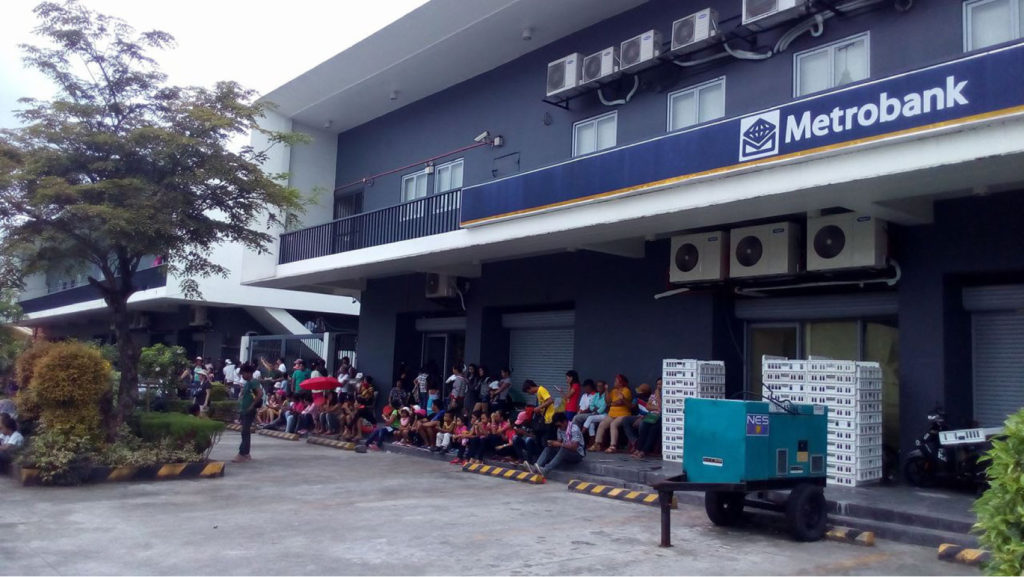
PALO, Leyte- Romeo Gatila expressed his surprise that this town has changed dramatically in almost three decades after he left his place of birth.
In particular, the 65-year old man noted the change of backdrop where the annual dramatization on the passion and death of Jesus Christ, held every Good Friday, is being held at the compound of the Palo Cathedral, officially known as the Metropolitan Cathedral of Our Lord’s Transfiguration.
“The last time I was here to watch the reenactment, there were trees all over the place and there were no structures except the cathedral itself and the municipal building which is just located adjacent to it,” Gatila, who now lives in Quezon City, said.
His family is originally from Barangay Luntad, where the Palo Cathedral is located and the center of activity of the reenactment.
Two years ago, commercial buildings were constructed inside the close to two hectares compound of the Palo Cathedral, built in 1596 but was proclaimed as a cathedral in 1936.
The structures were constructed by the Palo archdiocese and are being leased out to private companies. Among the business establishments located at the commercial buildings are bank, coffee shop, snack house, and a pastry shop.
For Gatila, the change of surroundings gives him a sort of melancholy.
“While I welcome the sprouting of the buildings as part of development, I still prefer the old atmosphere where there are tress and bigger space for the public watching the reenactment,” he said.
Palo is about 17 kms away from the regional center of Tacloban City and one of the areas in Leyte that suffered massive devastation when super typhoon “Yolanda” pummeled the province in 2013.
Town Mayor Remedios Petilla said that the rising of these structures within the Palo Cathedral area is an indication that the town of more than 70,000 people is on the verge of economic development.
“Palo is fast attracting new investors and we should all welcome this. While there are now structures within the (compound of the) Palo Cathedral, the yearly reenactment continues to be held there,” Petilla said.
The municipal hall is still being used as part of the sites of the reenactment, dubbed as “Pamalandong,” now on its 43rd year, which starts before 12 noon and ends at 3 pm.
Palo, a third class town with more than P159 million income, is seeing development after it was pummeled by Yolanda with the coming in of new investors.
For Ricky Portola, who is part of the more than 300 cast of the reenactment for the past five years now, the change of landscape does not bother them at all.
According to him, while some adjustments have to be made because of the presence of the structures in the area, the flow of the reenactment is still the same.
“There are no major changes actually. We still use the same route during the reenactment,” he said.
However, the “Golgotha,” a hill where Jesus Christ was brought and nailed to die, was changed from its old location.
The previous location of the Golgotha was near at one of the entrances of the cathedral but has to be changed to give way to a reconstructed building damaged due to Yolanda.
Now, the Golgotha is located near the cathedral, adjacent where image of Our Lady of Hope of Palo, blessed by Pope Francis during his January 17, 2015 visit.
Portola plays the character of Caiaphas, a role once played by his father, Fred, who was said to have plotted the killing of Jesus Christ.
For Pamela de la Cruz, who owns a shop just across the Palo Cathedral, the construction of the commercial buildings within the compound of the cathedral, is a welcome development.
“It only means that our town is developing. It’s the people who will eventually benefit from this development anyway,” de la Cruz, 36, said.
Meantime, more than 3,000 people watched this year’s Pamalandong, who appeared unmindful of the new backdrop. (JOEY A. GABIETA)



